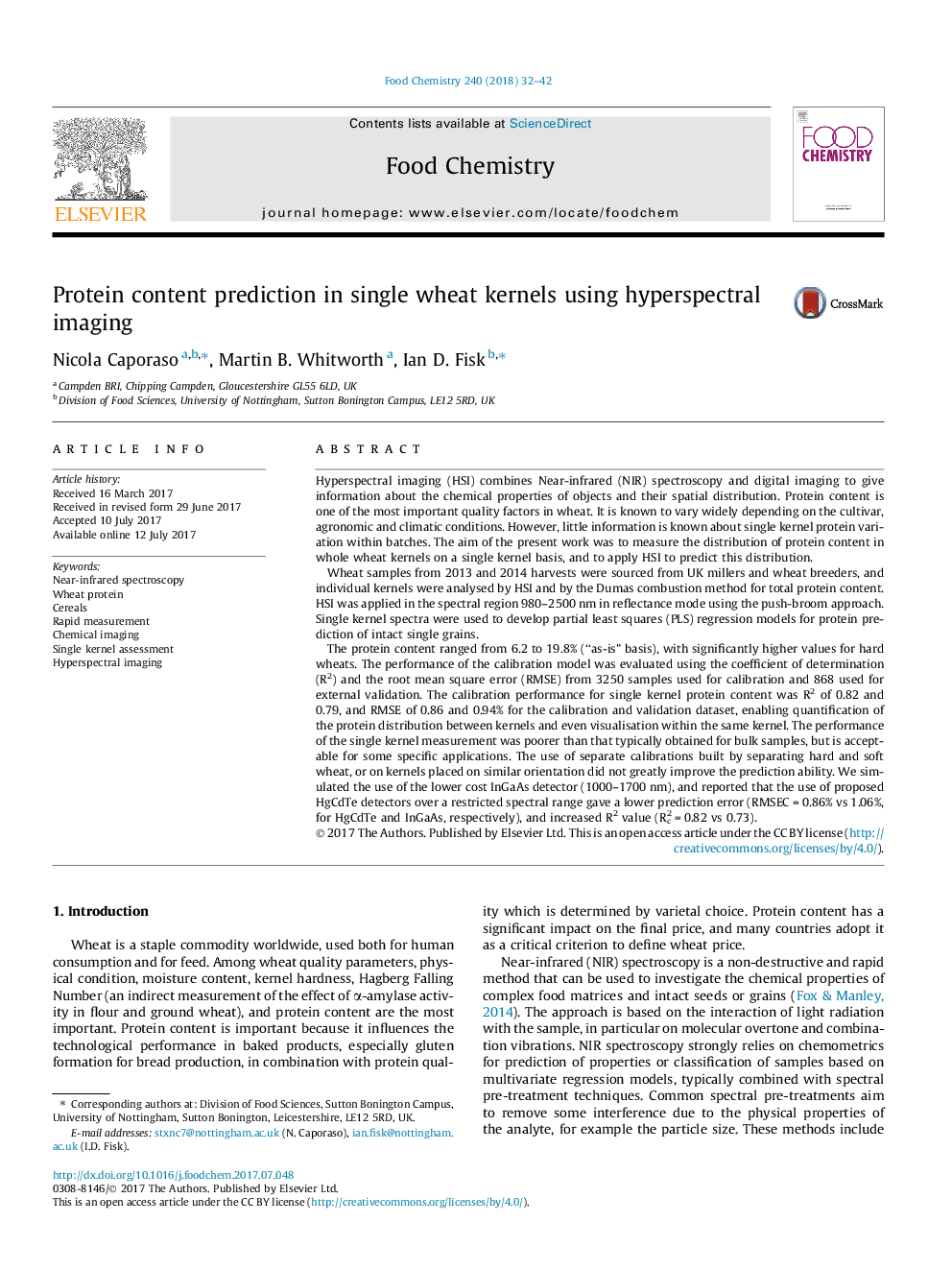| کد مقاله | کد نشریه | سال انتشار | مقاله انگلیسی | نسخه تمام متن |
|---|---|---|---|---|
| 5132441 | 1492052 | 2018 | 11 صفحه PDF | دانلود رایگان |
- HSI was applied for non-destructive prediction of total protein content in wheat kernels.
- Above 2100 wheat kernels were taken from ~200 batches and individually analysed.
- PLS regression models had R2Â =Â 0.82 and prediction error lower than 0.93%.
- Protein distribution had wide range (6-20%) and was visualised by applying the calibration.
- The performance of HgGcTe was superior to the one built by simulating InGaAs sensors.
Hyperspectral imaging (HSI) combines Near-infrared (NIR) spectroscopy and digital imaging to give information about the chemical properties of objects and their spatial distribution. Protein content is one of the most important quality factors in wheat. It is known to vary widely depending on the cultivar, agronomic and climatic conditions. However, little information is known about single kernel protein variation within batches. The aim of the present work was to measure the distribution of protein content in whole wheat kernels on a single kernel basis, and to apply HSI to predict this distribution.Wheat samples from 2013 and 2014 harvests were sourced from UK millers and wheat breeders, and individual kernels were analysed by HSI and by the Dumas combustion method for total protein content. HSI was applied in the spectral region 980-2500Â nm in reflectance mode using the push-broom approach. Single kernel spectra were used to develop partial least squares (PLS) regression models for protein prediction of intact single grains.The protein content ranged from 6.2 to 19.8% (“as-is” basis), with significantly higher values for hard wheats. The performance of the calibration model was evaluated using the coefficient of determination (R2) and the root mean square error (RMSE) from 3250 samples used for calibration and 868 used for external validation. The calibration performance for single kernel protein content was R2 of 0.82 and 0.79, and RMSE of 0.86 and 0.94% for the calibration and validation dataset, enabling quantification of the protein distribution between kernels and even visualisation within the same kernel. The performance of the single kernel measurement was poorer than that typically obtained for bulk samples, but is acceptable for some specific applications. The use of separate calibrations built by separating hard and soft wheat, or on kernels placed on similar orientation did not greatly improve the prediction ability. We simulated the use of the lower cost InGaAs detector (1000-1700Â nm), and reported that the use of proposed HgCdTe detectors over a restricted spectral range gave a lower prediction error (RMSECÂ =Â 0.86% vs 1.06%, for HgCdTe and InGaAs, respectively), and increased R2 value (Rc2Â =Â 0.82 vs 0.73).
Journal: Food Chemistry - Volume 240, 1 February 2018, Pages 32-42
